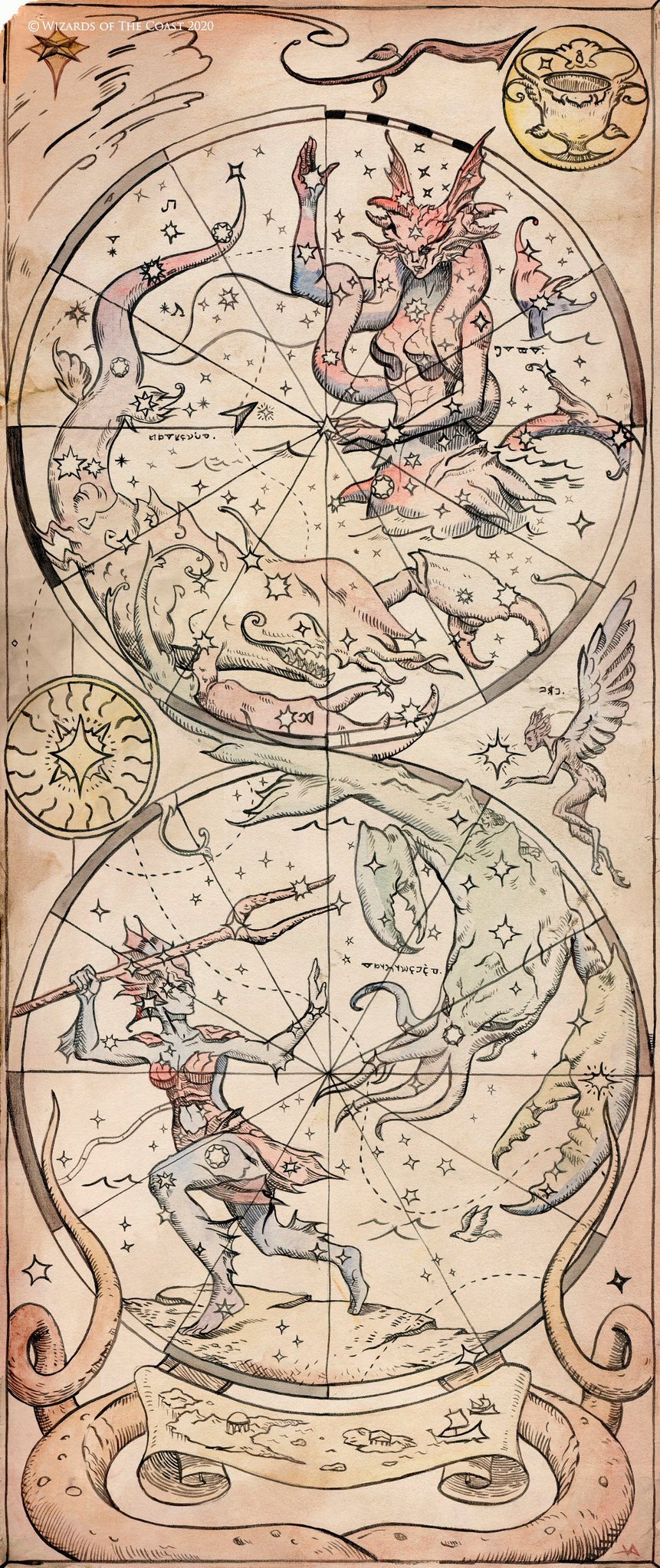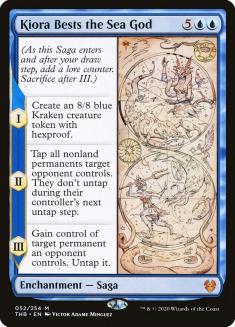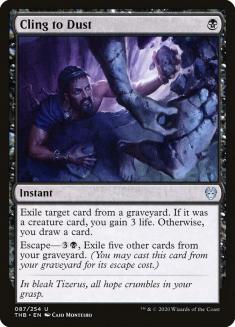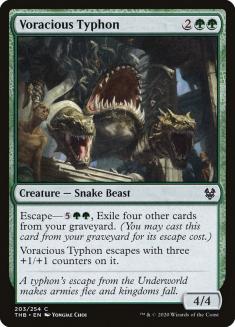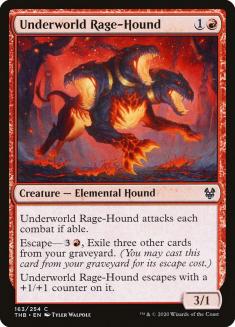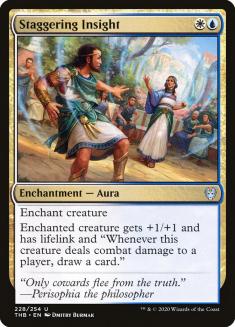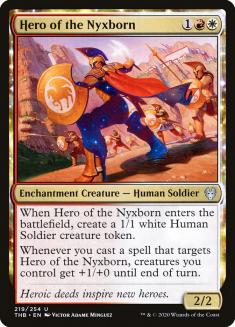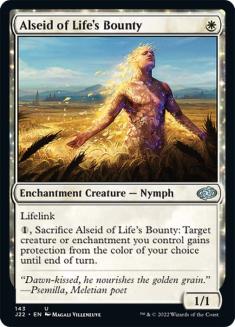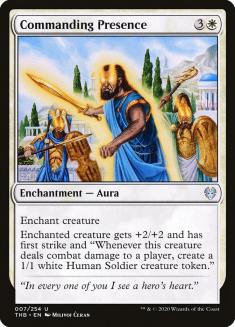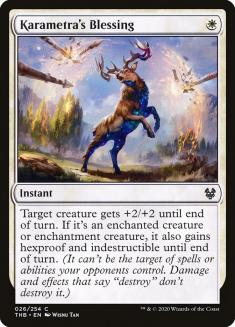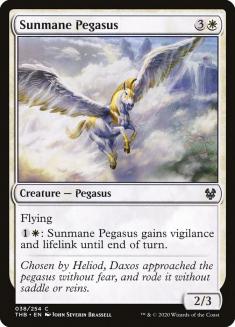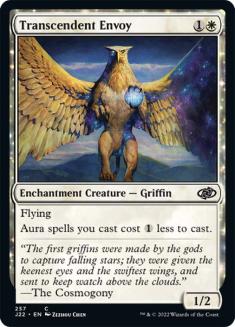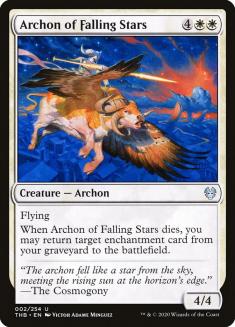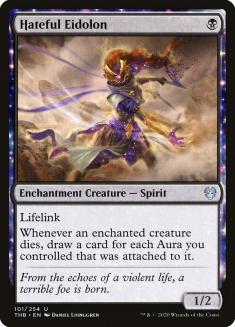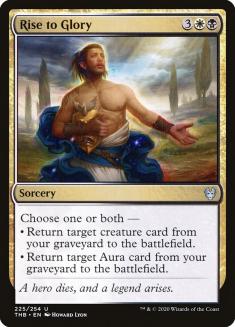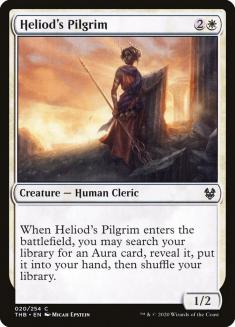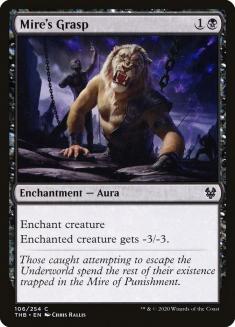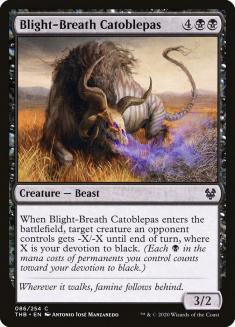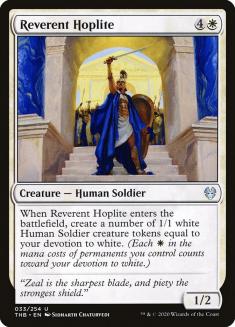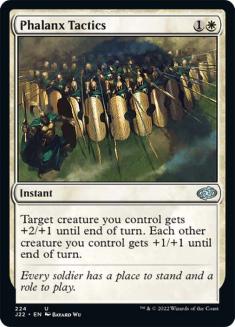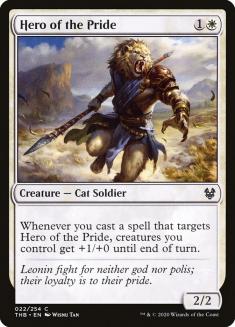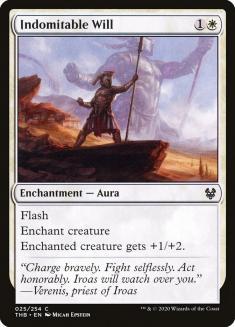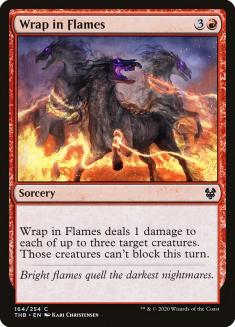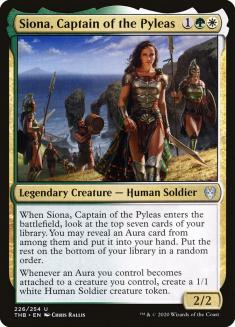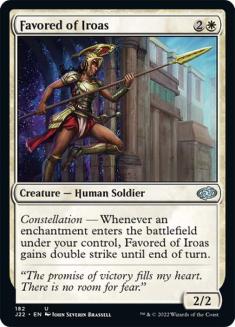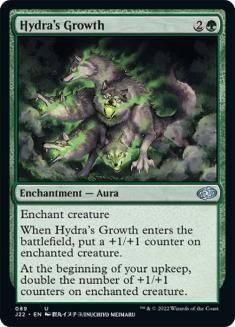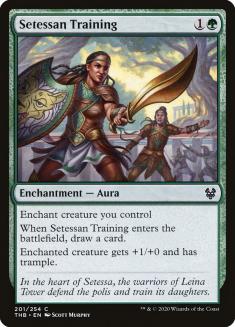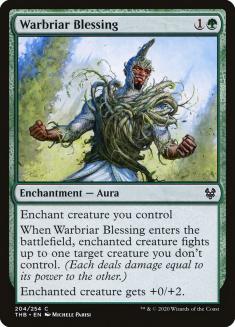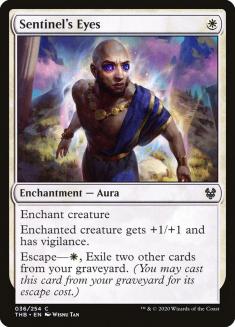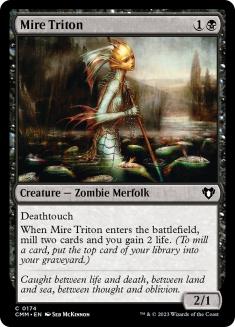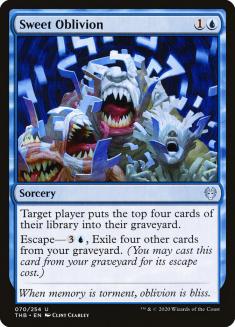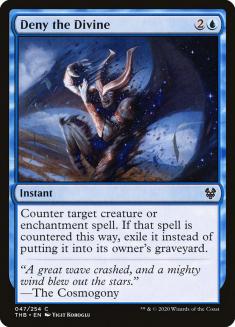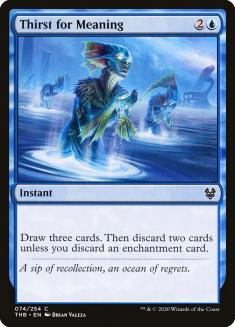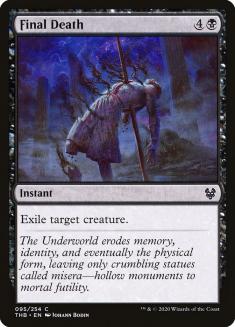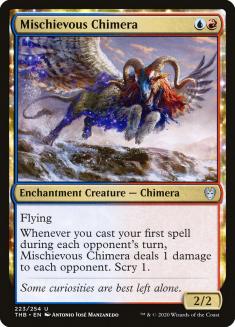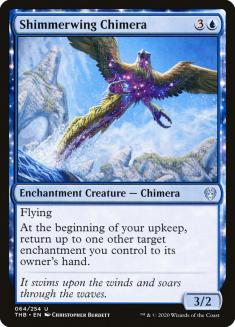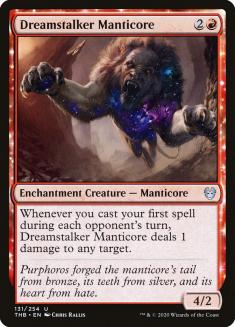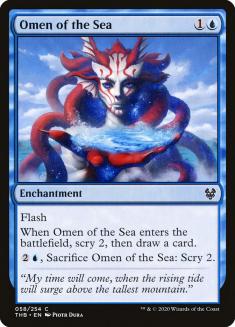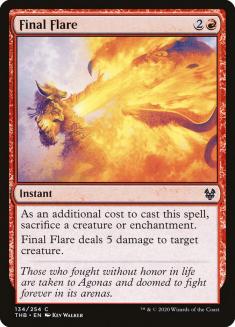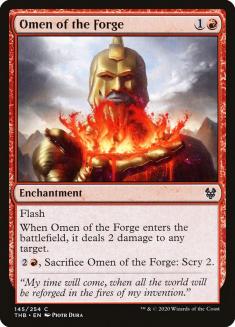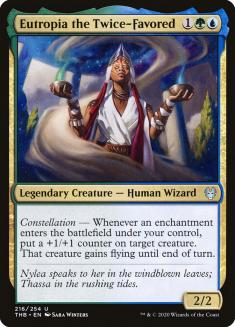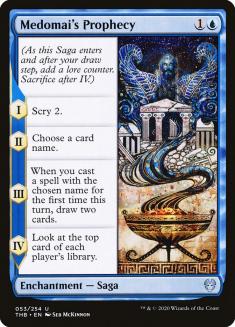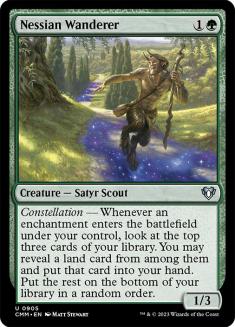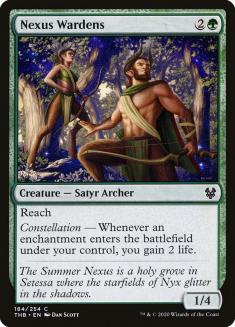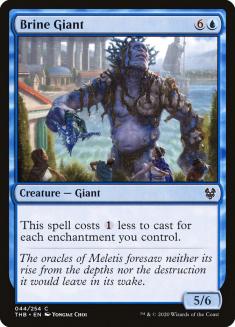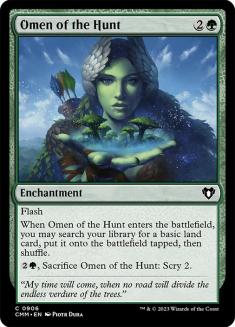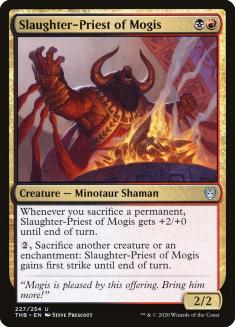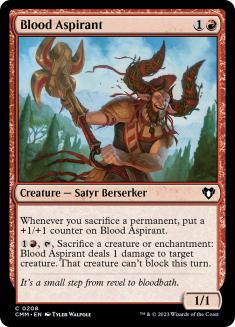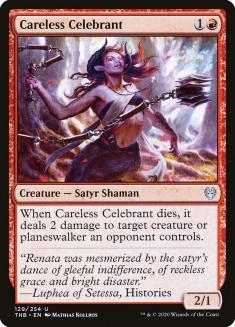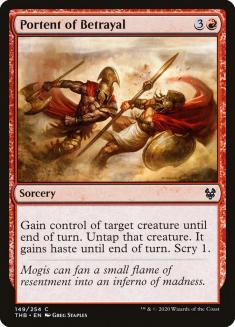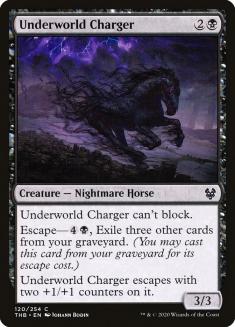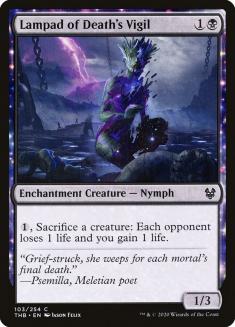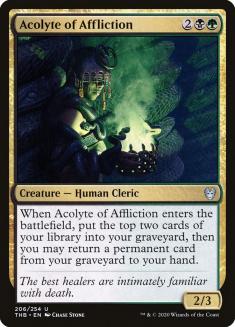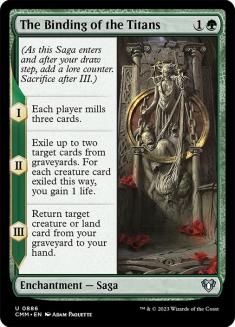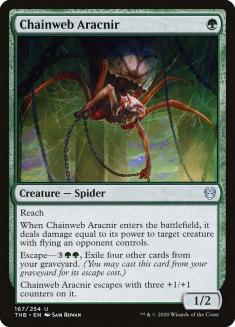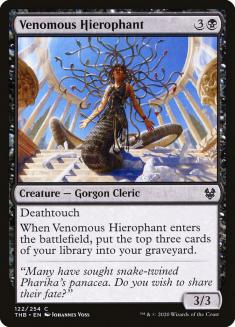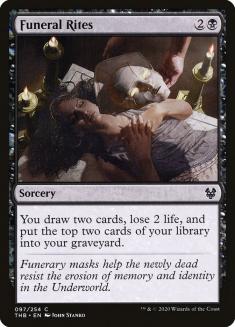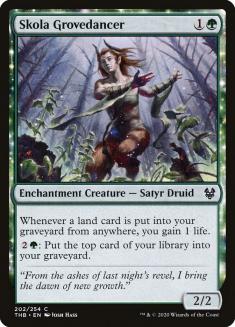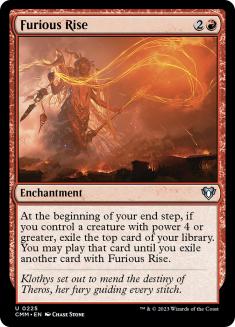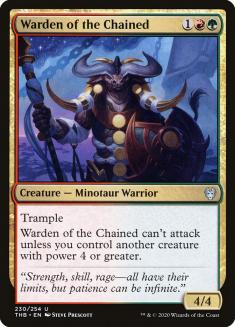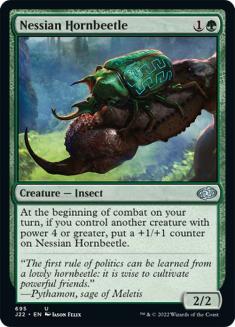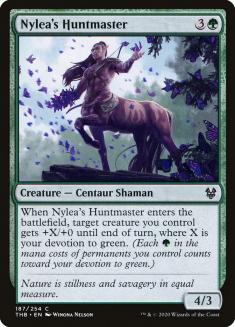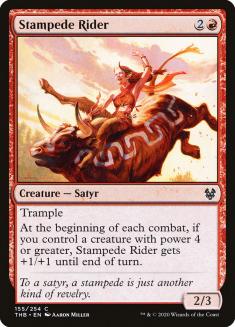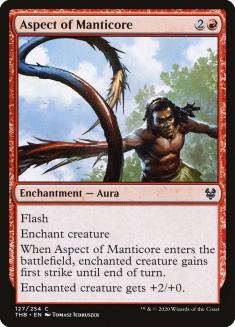I have a simple thesis about the state of Limited analysis in the last several years, and it boils down to this:
Broke: Ranking or assigning letter grades to cards.
Woke: Understanding which cards are important to which strategic archetypes that are available in a given Limited format.
In previous decades, it might have made sense to simply rank the cards for Limited. There was a time when sets were less synergistic and when there were fewer playable cards in packs. When many of the cards are bad, there’s a lot less room to build a deck with a coherent strategy, and when that’s the case, you’re more likely to just want as many “strong Limited cards” as possible.
The last set where that might have been true is Ixalan, because very few of the cards really had meaningful text, so archetypes mostly just broke into aggro or control with some consideration to creature types.
Theros Beyond Death is the opposite of that. These cards have text, and those text boxes interact and care a great deal about which other cards are in your deck. Even many of the best commons vary widely from archetype to archetype. So I could tell you which cards I’m happiest to first-pick, but once you get around five picks into a draft, almost all of that stuff goes out the window as you start building an actual deck.
Instead, I think it’s useful to talk big picture. How is this set different from other sets? What really matters here? What do these archetypes look like and what matters in them?
Speed of the Format
One of the first things people usually ask is whether a format is fast or slow. Relatively speaking, this is a slow format. I’ve seen regular discussion about games going to natural decking more often than in other formats, and I suspect the average game lasts more turns than normal. There aren’t a lot of high-power evasive creatures for their cost and there aren’t major mechanics that explicitly punish blocking or reward attacking (like exert, bloodthirst, or raid, all of which can snowball in a way that promotes building aggressive decks).
Aggressive decks exist, but they’re more likely to go big in some capacity than fast: Gruul plays big creatures, Boros typically goes somewhat wide and then uses heroes to pump their team, and Selesyna and Azorius aggressive decks typically enchant and protect a single creature. The goal in all of these cases is to use your cards to do something more powerful than the opponent rather than to use your cards to do something faster than the opponent, which is an important distinction: even the aggressive decks in this format don’t really expect to try to end the game before the opponent can cast most of their spells.
One result of this is that it’s less punishing to play with more expensive cards. There have been Limited formats where I would be hesitant to put a seven-mana spell in most of my decks regardless of its text, but here, Kiora Bests the Sea God is very likely the best card in the set in Limited. This applies to commons as well. Blight-Breath Catoblepas is very good because games last long enough that you’ll be able to cast it. This isn’t to say your curve doesn’t matter. You’ll still lose games if you start out too far behind. It’s just to say that it’s okay to extend your curve a little higher than you might in other formats.
How to View Escape
The defining archetype of Theros Beyond Death is, appropriately, escape. This mechanic is extremely powerful (If you ever do a chaos draft that features Theros Beyond Death, I recommend taking escape cards very highly). It’s essentially flashback that you can use multiple times. The number of times you can use it is restricted by your graveyard, which means your escape cards are all pulling from the same resource, so they have diminishing returns. This is why they’d be such high picks in a chaos draft where most likely nothing else will use that resource, but here, any given escape card is less valuable because you can probably find a different escape card that will still allow you to get value out of the cards in your graveyard.
What this means is that when building with escape cards, you want to prioritize quality over quantity, and pay careful attention to how many cards you have to exile. You’ll be able to cast a card that exiles two cards twice as often as one that exiles four, and that matters. In some ways, it makes sense to divide the impact of the effect by the number of cards you have to exile to calculate the value you’re getting per card exiled, but this only matters in games where the number of cards in your graveyard ends up being the limiting resource, which is some of them, but generally less than half.
The existence of escape radically changes basic understandings of card advantage. If I have a card that exiles three cards to escape that will reliably trade with one of my opponent’s cards, I essentially draw a card every third card that goes to my graveyard. This means that Cling to Dust generates card advantage the first time I cast it. If a card in the graveyard is worth a third of a card, and I exile a noncreature card in my opponent’s graveyard and draw a card, I’m up 1.33 cards and my opponent is down .33 cards, so I’m two-thirds of the way to a two-for-one for a single mana even if we completely ignore the possibility that I might escape the Cling to Dust just based on my ability to exile it to cast a different escape card.
This is centrally important to Golgari, my favorite archetype, and often to Rakdos, but it’s entirely possible to play games of this format where you never care about cards in your graveyard, particularly with blue or white decks.
Those decks that don’t care about graveyards need to be extremely careful about trading cards with their opponent, because trading cards fuels the graveyard and contributes to their gameplan. Golgari wins essentially through card advantage, which typically comes from milling themselves. A Golgari deck will typically be constructed in such a way that milling three to four cards is functionally very similar to drawing a card because it will help find more options to escape and fuel existing escape options. In this way, Golgari wins by overwhelming the opponent, essentially with card draw. This typically results in large battlefields.
Rakdos is the mirror image of that: same idea, opposite implementation. Where Golgari decks typically create large battlefields, Rakdos decks typically create small battlefields. Their goal is to trade resources as much as possible to clear a path for their aggressive escape creatures to connect with the opponent or trade with their creatures. This forces the opponent to either trade cards with them or lose, and when they start trading cards, you can run them out of resources by bringing them back to trade again. Golgari goes big and Rakdos goes small, but both love trading because they use their graveyard so well.
To compete with this, other decks need to make sure the game is played on their terms, which means you need to construct a deck that can dictate the rules of engagement to make sure the game is played on your terms. Take Azorius for example.
Azorius decks are often defined by the protection spells available to both colors at common: Karametra’s Blessing, Starlit Mantle, and to a slightly lesser extent Indomitable Will and Flicker of Fate. These cards allow you to protect your creatures to avoid trades. This will often generate a tempo advantage when they trade for a more expensive card, but more importantly they’ll protect your investment in your most important threat. This lets you use cards like Sentinel’s Eyes, Staggering Insight, or Commanding Presence, typically on a flying creature to create a threat your opponent has to deal with, but then to prevent them from dealing with it, thereby winning the game.
Gruul decks are similarly interested in attempting play that is determined by the strength of their threats. Here, they want to play creatures that are large enough that the opponent can’t profitably block, using tricks to get ahead, and run the opponent down before they can put enough creatures together to trade with the larger Gruul creatures. Wings of Hubris can serve as a great way to support this strategy, preventing trades to allow your big creatures to end the game.
Boros would conceptually like to get under the opponent, but realistically, it doesn’t particularly have the tools to do so reliably. Instead, they use early damage to force the opponent into a defensive role, which contributes to some kind of battlefield stall. Here, the Boros deck begins going wide, and then can often finish the game in some big fundamental turn involving combat tricks on Heroes (all of which grant all of your creatures +1/+0 until the end of the turn when targeted). In other games, this will function more similarly to Gruul as a more traditional aggressive “creatures plus tricks to get ahead and end a game quickly” type of role, but because those tricks are often Indomitable will and Aspect of Manticore, sometimes it ends up playing more similarly to Azorius, where you end up with a single huge creature with several enchantments on it that you’re trying to protect.
I’ve really gotten into the weeds here with a lot of details to make the point that different decks are trying to accomplish very different things, and that no matter what you play, you want to make sure that you have a cohesive plan with tools to attempt to dictate that the game will be played on your terms. With that greater context hopefully in mind, let’s try to break this down with a little more structure.
Azorius
Key Uncommons
Key Commons
These key cards aren’t necessarily the cards you want highest in a draft. Rather, they’re the cards that gain the most from the strategy and synergies most likely to define most decks of this color pair. There are certainly other ways to build these decks; particularly, for example, if you end up with multiple fantastic rares, you can just play as much removal and card drawing as you can find to try to resolve those rares, but these cards and other similar cards in this direction are the cards you’ll want that other people are much less interested in, so you can plan your strategy around getting them if your archetype is open.
While you don’t have actual heroic triggers like in the previous Theros, this kind of “Build-a-Bear” play style, where you invest in protecting a single creature, potentially with multiple enchantments, is most similar to that archetype historically.
Orzhov
Key Uncommons
Key Commons
White and black both have a lot of ways of exiling cards in this set, which can stop an opponent with escape cards from grinding out your control deck. This is important, because Orzhov decks are similar to Rakdos decks in that they typically want to trade cards and keep the game small. They rely less on escape to pull ahead in small games and more on traditional two-for-one trades, like Heliod’s Pilgrim finding a removal spell, or Blight-Breath Catoblepas, or uncommons like Archon of Falling Stars and Rise to Glory.
Sometimes, they can generate some kind of engine, such as Hateful Eidolon with Mogis’s Favor or Archon of Falling Stars with Omen of the Dead.
Orzhov has an abundance of good removal, but relatively few aggressive synergies, and almost always wants to be built as a control deck.
Boros
Key Uncommons
Key Commons
In general, you’re looking to build a typical aggro deck, and you want to prioritize creatures and tricks because large battlefields often favor you due to the nature of the heroes in this set. Wrap in Flames, in particular, can do a very good Overrun impression if you target your own Heroes with it. You’ll always want some removal, but you might prioritize it a little lower than some top aggressive cards, particularly if you already have some.
One card I want to call attention to that’s a little off-plan is Dreamshaper Shaman. Boros decks will typically put the opponent on the back foot, and it can be hard to turn the corner against them because you want to play defensively to avoid dying to a pair of combat tricks or something. This means that the game often goes long when the opponent starts to stabilize, but at that point things are often over for the Boros deck if they don’t have the tools to come back when the opponent has bigger creatures. Dreamshaper Shaman is the perfect way to leverage Boros decks into the mid- to late-game and can offer a powerful and important dimension they might otherwise lack.
Selesnya
Key Uncommons
Key Commons
This deck makes great use of Sentinel’s Eyes and Setessan Training because they trigger both constellation and Heroes in ways that help contribute to getting more future triggers. This archetype is similar to Azorius, except with slightly less focus on evasion. It’s a remarkably flexible archetype that can go wide, go big, go evasive, or even attrition if you focus on green escape creatures, and it has a remarkable amount of removal. This is one of the color pairs with the most flexibility, which can be a strength, but often means you need to be careful to make sure your deck still has a cohesive plan and not just a bunch of cards that have a loose synergy with three or four other cards in your deck.
I’ve had the best results with a lot of Auras and creatures that start fairly small, with a largely aggressive strategy, but that’s far from the only path here.
Dimir
Key Uncommons
Key Commons
Pharika’s Spawn is the best uncommon in the set and fully in a class by itself, so listing it as particularly desirable for this deck felt inappropriate. That said, I’m a lot more likely to draft Dimir if I start the game with some kind of bomb like that that offers a lot of inevitability if I can play a long game that goes through most of my deck.
It’s possible to build a more proactive version that takes advantage of the inevitability offered by the fact that it has a lot of unblockable damage sources from cards like Gray Merchant of Asphodel, Devourer of Memory, Lampad of Death’s Vigil, and even Fruit of Tizerus, but I prefer the more controlling builds.
Sweet Oblivion is best in conjunction with Thassa’s Oracle, particularly if you have some copies of Omen of the Dead to allow you to start milling yourself to find the Thassa’s Oracle, and then win by decking yourself, but it’s also a compact plan to win the game in extremely creature-light Dimir builds by decking the opponent. Alternatively, if you have strong escape cards, especially Pharika’s Spawn, you can use it to dig to those and fuel them.
Cling to Dust made the list because this archetype really needs to prioritize answers to opposing escape cards, and that plays especially well, since it can also offer card advantage in the mid-game.
This is a typical Limited control deck, which means you really want to proceed with caution if you just start the draft with some removal spells. A single bomb can be the difference between a great deck and a weak deck when you can go through most of your cards in most of your games.
Izzet
Key Uncommons
Key Commons
This archetype wants to prioritize acting at instant speed as much as possible. Ideally, you’ll play a Delver-style game where you’ll cast a two-drop and then spend the rest of the game leaving mana up and acting either in response to their spells or at the end of their turn. Omens are a high priority here and they’re flash spells that let you productively spend mana in your opponent’s end step later and pair well with Final Flare, which is your best instant-speed removal spell.
This deck generally wants a low creature count, probably in the eight-to-twelve range, with minimal expensive sorcery-speed plays.
Similarly to Dimir, it has relatively few and relatively weak explicit synergies and relies more on the strategic cohesion of playing a flash deck.
Simic
Key Uncommons
Key Commons
This archetype is very good at splashing because green offers a lot of fixing and blue offers a lot of card selection and card draw. The fixing in green comes in the form of ramp spells, which means this deck typically wants a high curve, especially if it’s planning to splash, as it will naturally have a lot of mana sources and will typically cast expensive spells ahead of time. This means the cheap cards you play should typically be defensive cards like Nexus Wardens and Riptide Turtle, since you shouldn’t need to attack with them, as you’re planning to win the game with your more expensive creatures. Similarly, you’ll want some of your cheaper cards to be Return to Nature or similar, as you want cheap plays to avoid falling behind, but you’d prefer they’re more defensive, and removal fits the bill even if it’s somewhat narrow.
Don’t hesitate to splash good removal spells or off-color bombs. Just make sure you have plenty of cheap plays so you don’t get run over. This deck will often have a few cards with constellation, which means it’s nice if your expensive creatures are enchantment creatures. Typically, it can be good to avoid playing expensive enchantment creatures because they let the opponent get so much value out of their enchantment removal, but here I prefer to just take all the enchantment creatures and overload their enchantment removal while getting the benefit of more constellation triggers and better Thirst for Meanings.
You’ll want relatively few escape cards here because you’ll be trading relatively rarely, and you’re more concerned with winning by playing more impactful cards than your opponent than by grinding them out.
Rakdos
Key Uncommons
Key Commons
Rakdos can and often will be built to take advantage of sacrifice synergies, but to my mind, that’s kind of a sideshow. The real goal of Rakdos decks is attrition. These aren’t the all-in aggro Rakdos decks we typically see in Ravnica sets. You want to maximize Underworld Rage-Hound and Underworld Charger, which are great aggressive cards, yet can be completely blank if your opponent has a large blocker, or even a Turtle. As a result, you want to play a lot of cards that kill your opponent’s blockers (and/or Wings of Hubris).
Any cards that fuel your graveyard like Thrill of Possibility, Venomous Hierophant, Oread of Mountain’s Blaze, and Funeral Rites assist in your ability to grind an opponent out.
When drafting, the first priority should be removal spells, as you basically want as many as you can get, but that can shift to escape creatures later in the draft if you don’t have enough ways to use your graveyard.
Golgari
Key Uncommons
Key Commons
It’s easy for these decks to put cards in their graveyard and easy to spend those to cast escape spells. I think of milling myself for three as roughly equal to drawing a card, so Venomous Hierophant is a fantastic card as a 3/3 deathtouch cantrip for four mana. Similarly, Relentless Pursuit is very strong, since it’s closer to drawing three cards than two when everything goes right because of the extra cards that end up in your graveyard. To take advantage of Relentless Pursuit, you want creature density. If you don’t have enough, you might not want to play it.
This deck can sometimes mill itself so well that decking is a serious concern. Fortunately, the colors are fairly deep and the power level is relatively flat as long as you have a good density of escape cards and ways to get through your deck, so it’s reasonable to play more than 40 cards in this archetype to make sure you can finish the game before running out of cards.
This archetype plays similarly to Simic. You’ll probably win long games, so your goal is just to stay alive early. Even more than in Simic, trading almost always favors you.
Gruul
Key Uncommons
Key Commons
The uncommon payoffs for controlling a four-power creature are very high-impact, so you really want to prioritize four-power creatures. Also, your creatures hit hard enough that opponents will have to block, which means you can routinely get value out of your combat tricks.
The push to play combat tricks and Nylea’s Huntmaster means that trample is particularly valuable, as it can push a lot of damage.
This is maybe the archetype that feels most typical of its color combination historically, but it plays well and synergies are strong. Use caution with Nylea’s Forerunner: granting trample to all of your creatures is often game-winning, but Disenchant effects are often weak against most of your deck, so you want to consider that your opponent might have a Return to Nature that’s just waiting for a good target. As a result, you might want to avoid casting it if you have enough other trampling creatures.
Your Turn
That covers every color combination. Remember that cards listed for each combination are not the cards you want to take highest when you’re drafting. Instead, these are the cards you can expect to build your deck around because you want them more than other players. Many of the generically good cards like premium removal and generally strong creatures didn’t make the list, but they’re still important.
The final takeaway here should be that you want to have a clear idea of your gameplan as early as possible when drafting, or to keep it in mind when building a Sealed deck. Formats are sometimes discussed as being more or less synergy based. Here, I’d argue that the format is strategy based. Sometimes the synergies are explicit and sometimes they’re not, but it’s very hard to succeed without a clear strategy in mind.

